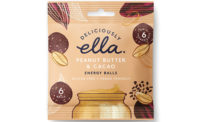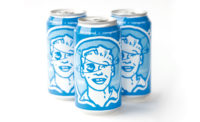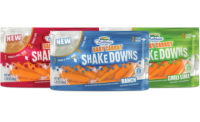Consumers push the trends in this market, which include flavor diversity, health and wellness appeal, convenience/resealability and clean label. There are opportunities for manufacturers, such as sustainable processes and increased productivity levels, to keep up with demand.
A Global Data report cites that the snack food market is valued at U.S. $96.6 billion and expected to grow at a CAGR of 6% until 2021. The growing demand for snacks is also having a positive impact on the flexible packaging industry. Bags and sachets are still the most used container type, with a 90% market share. They’re cost-effective to manufacture, easy to transport and convenient for the consumer.
Following are a few new packaging designs for sure-to-become favorite products.
Move Over for the Minis
Babybel has come out with Babybel Mini Rolls, a new take on an old favorite. A new twist on a classic dairy snack beloved by both parents and kids, Babybel Mini Rolls offers a spirit of creativity to snacking with a fun and exciting new spiral shape that kids and parents can peel and eat together, with imaginative possibilities for creativity.
Who wouldn’t have fun twisting, twirling, peeling or pulling the new Mini Rolls? The brand invites consumers to roll with Babybel Mini Rolls by sharing their moments on Facebook, Instagram and YouTube by tagging @Babybel or @Babybelus on Twitter. Babybel Mini Rolls contain no artificial preservatives, flavors or colors, and come in five-count packs in the dairy aisle at all major retailers.
Lance has come out with a bite-sized version of its classic sandwich crackers. Lance Minis offer all the same flavors baked into the iconic sandwich crackers, now in two mini variations — Toast Chee Peanut Butter (creamy peanut butter sandwiched between two cheese-flavored crackers) and Whole Wheat Peanut Butter. Just like the original, these are made with real peanut butter and no artificial flavors or preservatives, perfect for on-the-go snacking or sharing. The Minis are available in a 12 ct. carton of 1 oz. packs, an 8.5 oz. shareable box and 2.5 oz., single-serve flexible packs.
Plant-Based and Tasty
Qwrkee has launched a new plant-based range of products including vegan jerky and snack puffs. Qwrkee’s Puffs is a probiotic snack with over 1 billion live bio-cultures. The gluten-free snacks come in flavors like beetroot, vegan cheese, cauliflower and sweet chili.
The jerky is a soy protein snack with a texture to resemble meat. It comes in smoked maple bacon, smoked black pepper, sweet and spicy BBQ, and sriracha hot chili varieties in resealable bags.
London-based Slice Design was responsible for bringing the pack design to life, creating a colorful yet open design that uses just enough product information on the front to roll out across additional ranges.
Lilly’s Foods now uses 100% recyclable packaging, including tub and label, for its hummus and salsa products. In an effort to the brand’s commitment to increase sustainability, Lilly’s uses recyclable materials. Lilly’s uses a handmade craft process, using non-GMO and organic chickpeas. Lilly’s products are made with whole foods, rather than blended
ingredients, to make its products — such as real olive oil, pure organic sesame tahini and other clean, simple ingredients.
Lilly’s realized that its core, environmentally conscious consumers value sustainable packaging practices. As a brand committed to organic, non-GMO, flavorful hummus, the packaging transition was a clear next step. A focus on environmental sustainability, organic ingredients and ethical sourcing has helped to steer each decision for the brand.
|
A Look into the Future By Shayne De la Force | chief marketing officer, tna solutionsWe caught up with Shayne De la Force from tna solutions (tnasolutions.com) on the future of snack food packaging and what it means for manufacturers.
|








